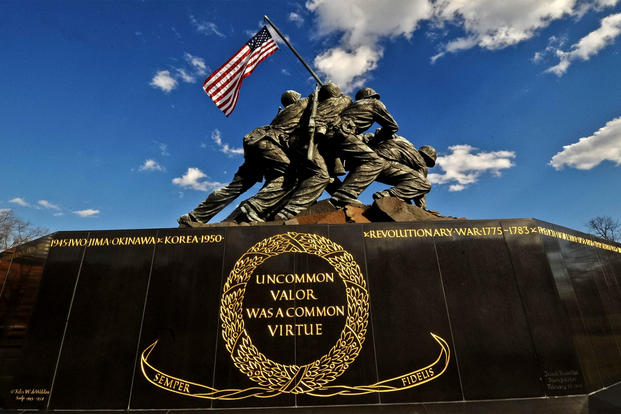The tradition had been that wars had to be over before their names were engraved on the iconic U.S. Marine Corps War Memorial in Arlington, Virginia -- better known as the "Iwo Jima Memorial."
Although the wars in Iraq and Afghanistan have no end in sight, the U.S. Department of the Interior and the National Park Service dispensed with the tradition Tuesday for the official dedication of the new engravings and renovations of the memorial site.
Unlike other conflicts listed at the base of the memorial, which have beginning and end dates, the war in Afghanistan is listed simply as "Afghanistan 2001," followed by a dash.
Iraq is listed as "Iraq 2003," also followed by a dash.
That is OK with Gen. Robert Neller, commandant of the Marine Corps. He said the end dates will be filled in when they happen, and "hopefully, one day there will be an end date to put up there."
Speaking to a small group of reporters following the brief ceremony, Neller would not speculate on when that might be but said, "I think, one day, yes."
In his prepared remarks, he said it is only fitting that Afghanistan and Iraq be listed on the memorial -- with or without end dates.
"These engravings represent the 1,481 Marines to date who gave all, as well as their surviving families and a Corps who will never forget them," Neller said.
The engravings and site renovations were made possible by a $5.37 million donation from philanthropist David M. Rubenstein, co-chief executive officer of The Carlyle Group.
Rubenstein, whose father was a Marine, said at the ceremony, "Today, we're simply adding two words to the Marine Corps Memorial -- Afghanistan and Iraq.
"But what they stand for is historic and should make every American pause and give thanks for the sacrifices of life and limb that our armed forces have made to protect our freedoms," he said.
As part of the renovations, the dramatic, 32-foot statues of the six Marines who raised the flag on Iwo Jima's Mount Suribachi -- Harlon Block, Rene Gagnon, Ira Hayes, Franklin Sousley, Michael Strank, and Harold Schultz -- have been waxed and cleaned.
In 2016, the Marine Corps confirmed that Schultz was the sixth person that helped raise the U.S. flag on Mt. Suribachi -- not Navy hospital corpsman John Bradley as previously claimed.
Holes, cracks and seams on the mammoth bronze sculpture were also brazed to prevent water damage.
The next phase of the renovation will involve landscaping, road repair, replacement of lighting and installation of educational displays on the memorial's significance. The project is expected to be completed next fall.
When asked for his own take on the significance of the memorial, Neller yanked a thumb over his shoulder.
"Just look behind me" at the imposing figures of six Americans working as a team, dedicated to a mission. "It's all that's good about our nation," he said.
-- Richard Sisk can be reached at Richard.Sisk@Military.com.












